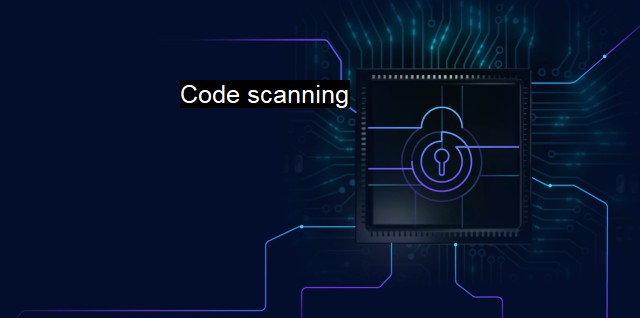What is Code scanning?
Code Scanning: The Essential Tool for Secure Software Development and Cyber Protection
Code scanning is a critical function in the world of cybersecurity and antivirus. It is a specialized process of inspecting the codes in software, applications, or any other type of digital product for vulnerabilities, flaws, or errors that could potentially be exploited by hackers or cybercriminals.Code scanning is designed to analyze raw codes to identify parts of the code that may pose potential threats. This could include known vectors for cyber attacks, snippets of codes indicative of known virus signatures, and even unknown sequences of code that are suggestive of suspicious behavior.
When we talk about code scanning we are generally referring to the process of identifying software vulnerabilities. These vulnerabilities can range from minimal concerns, such as poor coding practices that simply render the code ineffective or inefficient, to major concerns where insufficiently secured codes can allow cybercriminals to manipulate the software, steal sensitive information, or even gain unauthorized access to users' systems.
Backdoor vulnerabilities, code injections, cross-site scripting, buffer overflows, and other forms of software vulnerabilities can often be detected through the process of code scanning, effectively preventing a broad spectrum of potential cyber threats.
On the other hand, in the context of antivirus procedures, code scanning usually denotes the act of scouring software and system files for malicious codes. This includes virus signatures, trojan horses, worms, rootkits, keyloggers, and any other type of malware or unwanted software that might exploit your system's vulnerability, steal your sensitive data, or create disruptions.
Antivirus software typically use code scanning algorithms that have a database of known malicious codes. Any time the antivirus software scans the code and encounters a piece of code that matches one in their database, the software will then alert the user, quarantine the file in question, or even delete it outright based on the user's predefined settings.
Code scanning isn't limited to only known threats. Modern antivirus applications employ heuristic techniques that are capable of detecting zero-day threats or threats unknown to their database. They achieve this by comparing the code's behavior or attributes with potential algorithmic descriptions of malicious behavior, allowing them to spot harmful code based on how it acts, not just what it looks like.
While code scanning has always been an imperative process in both cybersecurity and antivirus operations, it has gained more emphasis in recent years owing to the rise in cyberattacks, proliferating amount of software being produced, and the booming importance of digital assets. Human code review has always been an important aspect of cybersecurity. with the sheer size and complexity of today's software projects, manual code reviews are not sufficient by themselves.
To meet up with the demand, automated code scanning tools have become more sophisticated and are becoming an inseparable part of any security-conscious development process. These advanced "scanners" use complex algorithms, incorporate machine learning techniques, and pull from vast threat libraries to scrutinize each line of code for potential weaknesses or threats.
Both manual and automated scanning has its limitations. Manual code scanning can be lengthy and subject to human error, while automatic code scanners might give false positives and negatives, potentially overlooking new threats. Therefore, a robust security strategy often entails a blend of both automated and manual code scanning.
It is worth noting that while code scanning is beneficial and can go a long way toward securing a company's digital assets against cyber threats, it is part of a wider cybersecurity framework. Other vital components include secure development practices, network security measures, security awareness training, timely patching, and continuous monitoring of system activities. Preserving safety in the pioneering world of digital technology necessitates adopting a multilayered approach, where code scanning plays an essential role, always working in conjunction with other mechanisms to yield the best possible defense.

Code scanning FAQs
What is code scanning in cybersecurity?
Code scanning is a process of analyzing and reviewing the source code of software to identify vulnerabilities, bugs, and security flaws that may affect the security and safety of the software.What are the benefits of code scanning?
Code scanning helps in identifying security risks early in the development stage and reducing the potential for cyber attacks. It also helps in ensuring compliance with security standards and regulations, increasing the overall security posture of the organization.What is the difference between code scanning and antivirus?
Code scanning analyzes the source code of software to identify vulnerabilities and security flaws, while antivirus scans executable files for the presence of known malware signatures. Code scanning is a proactive approach to cybersecurity, whereas antivirus is a reactive approach that relies on known threats.Can code scanning tools catch all vulnerabilities?
Code scanning tools can catch most of the common vulnerabilities and security flaws, but they cannot identify all potential security risks. It is important to supplement code scanning tools with other security measures, such as penetration testing and threat modeling, to ensure comprehensive security coverage.| | A | | | B | | | C | | | D | | | E | | | F | | | G | | | H | | | I | | | J | | | K | | | L | | | M | |
| | N | | | O | | | P | | | Q | | | R | | | S | | | T | | | U | | | V | | | W | | | X | | | Y | | | Z | |
| | 1 | | | 2 | | | 3 | | | 4 | | | 7 | | | 8 | | |||||||